Two weeks ago, Annette, Rani, Mamta and I attended Karneval in Bonn with Annette’s sisters and their families. In Germany, Karneval is celebrated most enthusiastically in areas of the country that have historically been Catholic. The state of North Rhine-Westfalia (“NRW”) where Bonn is located is the epicenter of Karneval celebrations in Germany. Annette’s sister Susanne lives in Bonn with her husband Mortiz (a “Bonner”) and their three children. Since Annette had lived in NRW during her high school years, she was familiar with the Karneval celebrations there, and was enthusiastic about our experiencing them as a family.
Karneval has its roots in Christian traditions leading up to Easter. The celebrating begins in earnest on “Fat Thursday,” the Thursday preceding Ash Wednesday. Six days of uninhibited excess end with Lent, a period of fasting and renunciation. Rhinelanders take the partying seriously: the celebrations typically begin at work on Thursday, and most employees are not expected to return to work until the following Wednesday. Each day parades are held throughout the region, with the largest being in Cologne on Rosenmontag — Rose Monday.
We traveled to Bonn on Friday afternoon, and returned to Berlin late Sunday evening. What we found at Karneval was an energetic mash-up of Halloween, New Year’s Eve and Spring Break.
On Friday evening Annette, her cousin Katrin, Rani and I went out in downtown Cologne. The city is a short train ride from Bonn, and the center of NRW’s Karneval festivities. The streets of the city’s historic center were filled with costumed adults greeting one another with the traditional Kölle Alaaf! (translating roughly as “long live Cologne!”). Pirates, Cowboys and Smurfs ranked among the most popular outfits. Music from bands set up in plazas and storefronts echoed through the evening chill.
We entered a small, smoky bar that was filled with cheery patrons, and ordered a round of Kölsch beers. They come in small glasses, “so the beer is always cold and fresh.” The waitresses keep a hieroglyphic tally on the coasters at each table.
The camaradarie at the bar swelled to include us, but still I felt like I was crashing someone else’s party. I had trouble understanding the Kölner dialect that was in full force that evening — not just in people’s conversations, but also in the traditional Karneval songs we heard wherever we went. After finishing our beers we headed out again in search of another scene.
A few blocks away, we were drawn toward live music emanating from what turned out to be a brewery. The beefy bouncer hesitated briefly over Rani — perhaps she looked young to him — and then waved us through the door. We made our way to a large, crowded room at the rear of the building where a stage had been set up. A boy band was belting out Karneval Schlager, and the crowd was singing and swaying along. After another beer and more songs that were sounding increasingly familiar, I started to relax into the spirit of Karneval. The musicians in the band were talented, and the charismatic lead singer worked the crowd skillfully. But I couldn’t help noticing a couple of guys who kept staring at Rani in a way that made me — and her — uncomfortable. When the band finished their set, we left.
Back on the streets again, we saw a line of three shiny cars around which groups of onloookers were hovering. Several men in fancy uniforms conducted other men in fancier uniforms and plumed hats into the cars, which then eased off slowly through the crowd.
“That must have been The Prince, The Farmer and The Maiden,” Annette said. She explained that every year, these titles are granted to three men who pay dearly for the privilege of being celebrated as the embodiment of Karneval. Prince Karneval rules over the festivities, the Virgin Maiden represents the City of Cologne, and the Peasant Farmer exemplifies the workers who built the city. The celebrations overseen by this trio have historically had overtones of political protest and satire, dating back at least to the occupation of the Rhineland by French troops in the early 19th century. When the Nazis came to power in the 1930’s, they required that the Maiden be played by a woman. Ja wohl! Although we would miss the climactic Rose Monday parade in Cologne, I later saw photos of floats from the parade with distinctly political themes. One had Ukranian protest leader Vitali Klitschko downing Vladimir Putin in a boxing ring, another morphed Buzz Lightyear with Angela Merkel, the “Intergalactic Chancellor,” and a third featured the NSA as Darth Vadar, “The Dark Side of Power.”
On Friday evening in downtown Cologne, the partying was more social than political. After a quick wurst from a street vendor, we ventured into one more crowded, raucous bar. I was coming to think that people watching was the best part of Karneval. Rani was surprised to see a woman dressed as a princess making out with a sailor, a panda bear and a clown in quick succession. I was reminded of the article I had seen on the City of Cologne’s official website, about 11 things (11 being the magic number of Karneval) that one should not do during Karneval. The list included urinating on the streets, having sex in public, and drinking to a coma. Eventually we headed back to Bonn on the train, satisfied that we had given Karneval in Cologne a decent shot.
On Saturday and Sunday, to my relief, we experienced Karneval as a family-friendly event — if that can be said when many of the adults start drinking beer by mid-morning. We watched my brother-in-law Mortiz and two of his children participate in a parade through the Beul quarter of Bonn on Saturday morning. The many youngsters lining the path of the parade filled bags with candy and other treats that were tossed from the passing floats. I appreciated that some of the paraders threw more practical items such as packets of tissues and even baseball caps.
On Saturday evening, Rani didn’t seem to mind staying in with the seven younger cousins so that the adults could attend a party at a nearby venue called The Blue Ape. We donned costumes, put on make-up, and headed along the Rhine on a combination of children’s scooters and bicycles — our own small parade. The Blue Ape was three parties in one: a crowded room playing traditional Karneval hits, a “disco” pumping contemporary beats, and a dance party for teenagers in the basement. This “Bonner” crowd was more civilized than the ones we had seen the night before in Cologne. The party-goers were relaxed and enthusiastic, but not wild. Mid-way through the long evening, a stir at the door announced the arrival of Bonn’s Prince, Farmer and Maiden. The trio’s resplendently-attired attendants cleared the way for their entrance. They were accompanied by a minimalist marching band that performed a couple of crowd-pleasers before the assemblage was whisked off to the next party. When we left well after midnight, the Blue Ape was still in full party mode. I was impressed, because most of these people had been partying since Thursday.
On Sunday we drove to Lechenich, a small suburb of Cologne where Annette lived during high school. Annette’s sister Doreen had met her husband Stefan during high school, and Stefan’s parents still live in Lechenich. There we experienced a small-town-but-still-impressive Karneval parade. Mamta filled up not one but two bags with collected treats.
After the parade had passed, Annette led me downtown to see the medieval wall that still rings parts of the town center, and to show me the house where she used to live. I felt as though seeing the town and the house helped to fill in a small blank spot on the picture I have of Annette. We returned on the path she used to take to school. It wasn’t hard for me to imagine the sixteen-year-old Annette flying along on her bike.
That evening on the five hour train ride back to Berlin, I wondered whether the effort to attend Karneval had been worth it. We were all beat, and would not arrive back at our apartment until after midnight. But having heard and read about Karneval for years, it was great to see and experience it firsthand. Our year in Germany is about expanding our horizons. Attending Karneval did just that.

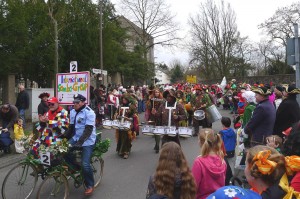
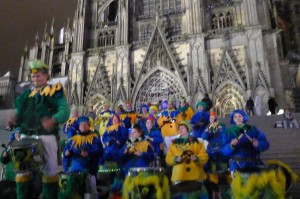
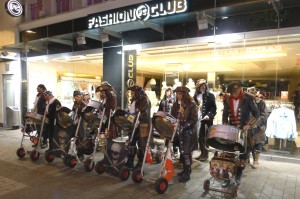
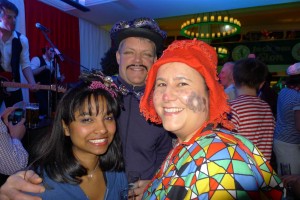
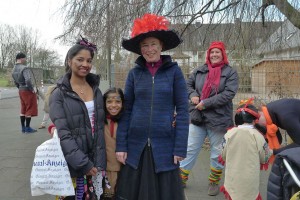
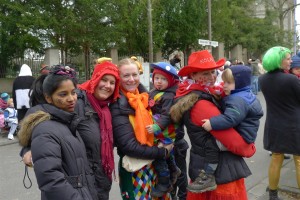
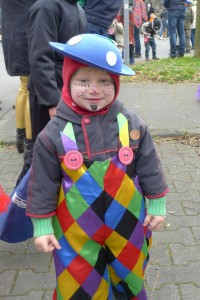
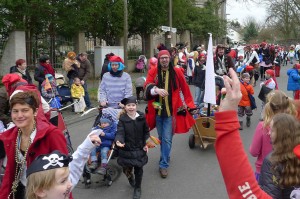
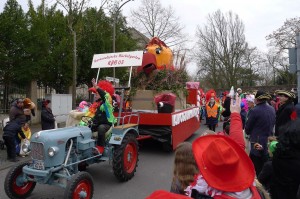
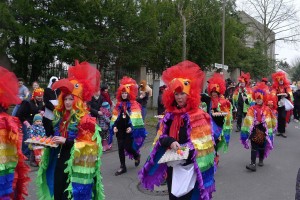
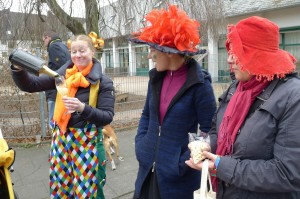
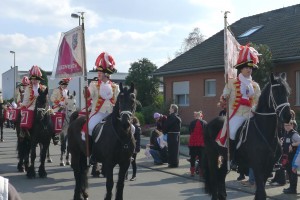
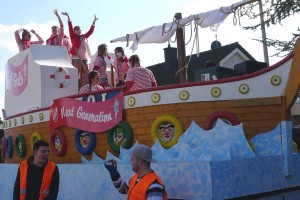
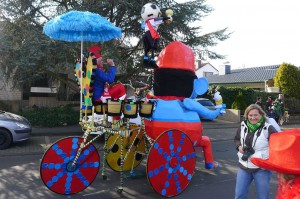
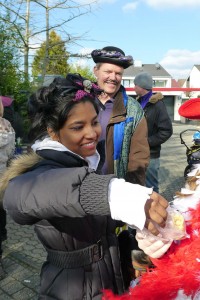
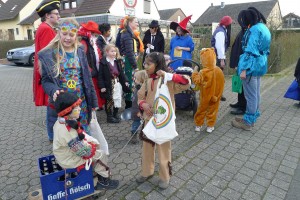
Wonderful!
I enjoyed your contribution to “Green Building Advisor” just now. When we lived in Vienna, I so wished that I had some use for many of the very cool products that were available at OBI and Bauhaus. I could wander around those places for hours, as you discovered. With the exception of adding a shelf here or there, and building a couple small shelving units for our laundry closet, there wasn’t much that I needed.
I also mentioned the challenge of finding a hardware store. It took some doing (so thankful for the internet!) but I did manage to find a metal retailer within walking distance of our place where I could buy screws, nuts and bolts when needed.
I found any of that kind of shopping to be a challenge. Buying a pair of shoes? No problem! Finding a tiny nut and bolt to fix a computer bag? Good luck!